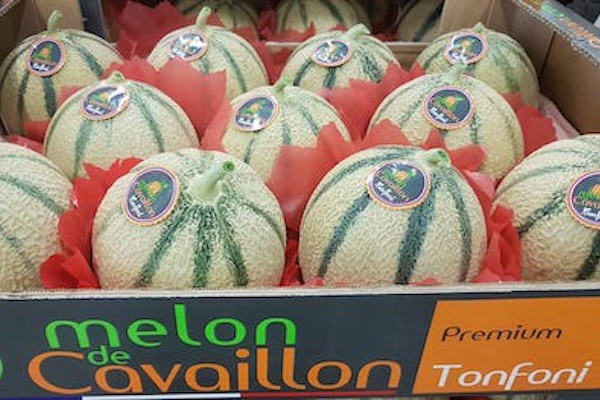Over the past two years, the melon supply from Spain has dropped due to a reduction in production areas, but in France, the opposite is true. "For the past 2 or 3 years, the trend in the Provence region has been to plant a little more in the first part of the season, which is the early greenhouse season in May/June," explains a melon specialist from Ets Tonfoni & Co.

Early season impacted by bad weather
This is an opportunity for the French origin to be better represented at the beginning of the season on the shelves. "The problem with melons is that they are highly sensitive to the weather. In May and June, sales were too low. The few Spanish melons on the market were enough to satisfy the demand. However, I am convinced that if the weather had been on our side, we could have had a good start to the season."
Melon production in difficulty
The cool, rainy weather did not only affect consumption. Production also suffered. "The season started poorly, with our melon fields suffering. We had a lot of small sizes, which never sell well. As for open-field melons, we have just started the campaign, with a delay of 8 days. The bad weather has had an impact on the plants, which have not taken root. However, we are making good progress in the season, although we will still be far from the volumes we should have. At best, it should take around 30 days from flowering to picking, as we are still suffering the consequences of last month's bad weather."
Towards a balanced market?
Despite a difficult start to the season, nothing is lost yet. "As far as we are concerned, as long as Provence and Languedoc are the only areas producing, everything will depend on the weather. With some luck, we should see higher volumes from late June to early July. Likewise, if the warm, sunny weather sets in, the market will be active and this will help support melon prices. I am hoping that the weather will finally turn at the beginning of July, which will kick-start the campaign."
Quality is a permanent objective
Regardless of the offer, Ets Tonfoni always sets quality as its permanent objective. This is becoming more and more of a challenge. "As far as sugar levels are concerned, the new varieties are performing very well. But when it comes to taste, we have to ask ourselves what makes a good melon. With the drastic reduction in the means available to combat diseases or pest pressure, we are finding it harder to protect our melon fields, save our harvests and our incomes.
A number of parameters are required to achieve quality, including the product, the human resources, and the will to achieve it sustainably.
For more information:
Ets Tonfoni & Co
Phone: +33 4 90 73 11 63
www.tonfoni.com
